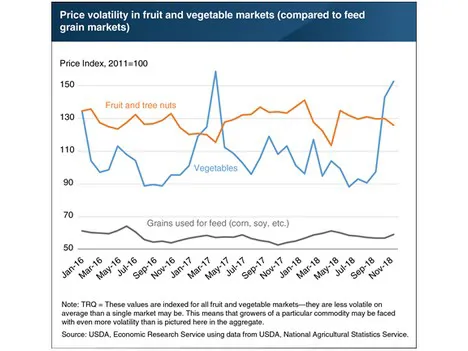The U.S. Department of Agriculture estimates that annually, over $161 billion of food at the retail and consumer stage of the supply chain goes uneaten. Food loss also occurs on farms and in the pre-retail distribution channels—the Food and Agricultural Organization estimated 30 percent of losses in fruits and vegetables occur in these earlier stages.

USDA’s Economic Research Service recently examined the substantial role that expected costs, revenues, and risks play in food loss at the pre-retail level. Factors influencing food loss include price volatility: for example, vegetables have exhibited a relative variation in price more than 20 times that of grains used for feed. When prices fall below the cost of production, it becomes unprofitable for growers to advance produce through the supply chain.
Alternatively, when prices rise, growers harvest more intensively, and may have the incentive to send lower-cosmetic-quality product to market, which can then be subject to increased loss further down the supply chain. Other economic factors that influence the level of food loss include labor cost and availability, availability of cold-chain infrastructure, aesthetic standards, consumer preferences, contract requirements, and policies related to the harvest and marketing of fresh produce.
This chart appears in the recent ERS report, Economic Drivers of Food Loss at the Farm and Pre-Retail Sectors: A Look at the Produce Supply Chain in the United States. To read the full report, click here.
For more information:
USDA ERS
Tel: +1 (202) 720-2791
Email: askusda@usda.gov
www.usda.gov
